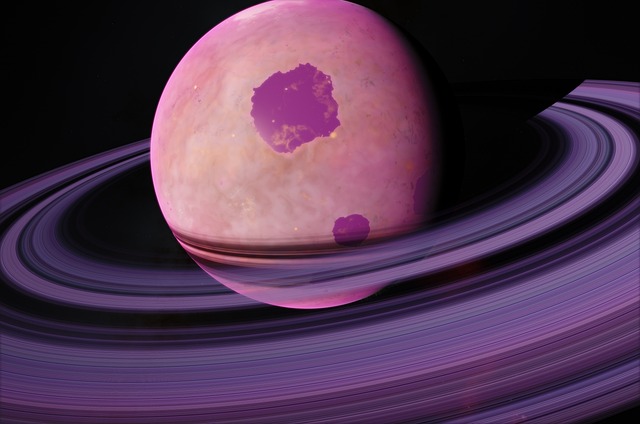The universe, a vast and enigmatic expanse, holds countless secrets, and among them lies the captivating tale of Barnard’s star. This red dwarf, a celestial beacon just six light-years away, has long captivated astronomers with its proximity to our solar system. And now, a groundbreaking discovery has ignited the imaginations of scientists and space enthusiasts alike: Barnard’s star harbors a planetary system, a testament to the cosmic dance of creation that unfolds across the universe. This revelation has propelled Barnard’s star into the forefront of astronomical research, igniting a burning desire to understand the potential for life on these distant worlds.
[ez-toc]
Imagine standing on a distant planet, gazing up at a sky painted with a deep, rich crimson hue. This is the view that might greet an intrepid space traveler visiting a world orbiting Barnard’s star. Its crimson glow, a stark contrast to our sun’s familiar yellow light, is a testament to the star’s diminutive size and relatively cool temperature. A red dwarf, like Barnard’s star, is the smallest and least luminous type of star in our galaxy, a cosmic ember compared to the blazing sun. But despite its subtle glow, Barnard’s star holds a profound allure. Its close proximity to our solar system makes it a prime target for exploration, beckoning us to unravel the secrets of its planetary system.
Unveiling the Cosmic Neighborhood: Barnard’s Star and its Planetary System
Barnard’s star, nestled within the constellation Ophiuchus, has been known to astronomers for over a century. Its quiet nature, characterized by a lack of disruptive flares, makes it an ideal candidate for studying the delicate dance of planets around a star. The discovery of its first confirmed planet, Barnard b, in 2018, was a monumental moment in our understanding of exoplanets – planets that orbit stars beyond our solar system.
Barnard b: A Rocky World in Close Orbit
Barnard b, a world with a mass about 40% that of Earth, circles its host star at a dizzying speed, completing an orbit in just three Earth days. Its proximity to Barnard’s star, 20 times closer than Mercury to our sun, translates to an intense heat, rendering it inhospitable to life as we know it.
The detection of Barnard b, a remarkable feat of astronomical observation, was achieved using the ESPRESSO instrument, mounted on the European Southern Observatory’s Very Large Telescope in Chile. ESPRESSO, a powerful spectrograph, meticulously analyzes the starlight, searching for the telltale wobble caused by a planet’s gravitational pull. This wobble, a subtle dance of light, reveals the presence of a planet, even one as small as Barnard b.
Beyond Barnard b: Potential Candidates for Life?
While Barnard b may be too hot for life, the discovery has spurred a wave of excitement among scientists. The researchers found “strong hints” of three other planets orbiting Barnard’s star, adding another layer of intrigue to this already compelling system. These potential planets, if confirmed, could be rocky and smaller than Earth, ranging from 20% to 30% of our planet’s mass.
The possibility that one of these planets might reside within Barnard’s star’s “habitable zone” is a tantalizing prospect. The habitable zone, also known as the Goldilocks zone, is a region around a star where conditions are just right for liquid water to exist on a planet’s surface. Liquid water, as we know, is a fundamental ingredient for life as we understand it.
Imagine a world bathed in the warm glow of Barnard’s star, a world where liquid water carves its way through canyons and rivers, where clouds drift across a sapphire sky. This is the vision that fuels our imaginations as we ponder the potential for life on these distant worlds.
The Search for Habitable Exoplanets: A Cosmic Quest
The discovery of Barnard b and its potential planetary companions reinforces the notion that planetary systems are common in our galaxy. The universe, it seems, is teeming with planets, each with its own unique story to tell. And among these planets, a select few may hold the key to unlocking the mysteries of life beyond Earth.
The search for habitable exoplanets is a quest that is both exhilarating and challenging. Astronomers have developed an arsenal of sophisticated tools and techniques to detect and characterize these distant worlds. From space-based telescopes like Kepler and TESS, which search for tiny dips in starlight caused by planets passing in front of their stars, to ground-based observatories equipped with powerful spectrographs like ESPRESSO, astronomers are pushing the boundaries of our knowledge of the cosmos.
The challenge lies in distinguishing the faint signals of these distant planets from the vast sea of astronomical data. This is like searching for a needle in a haystack, but with the aid of powerful computers and innovative algorithms, astronomers are making significant progress.
Each newly discovered exoplanet adds another piece to the puzzle of planetary formation and evolution. The diversity of exoplanets, from super-Earths to gas giants, provides us with a glimpse into the extraordinary tapestry of the universe, where worlds are woven together in an endless array of configurations.
We also Published
- Additive Inverse of an Element: Understanding the Concept
Learn about the additive inverse of an element, how to find it, and its importance in mathematics. - Linear and Circular Motion : Understanding Basics
Explore the fundamentals of linear and circular motion, their differences, and real-world applications in physics and engineering. - FDA Approves Over-the-Counter Hearing Aid Software for Apple AirPods Pro
The FDA has authorized the first over-the-counter hearing aid software for Apple AirPods Pro, making hearing care more accessible and affordable.
The Quest for Interstellar Travel: Reaching for the Stars
While Barnard’s star and its planetary system are within our cosmic neighborhood, they remain tantalizingly out of reach for current human technology. The vast distances of interstellar space present a formidable challenge to our ambitions for space exploration.
Imagine the thrill of embarking on a journey to a distant star system, a voyage that would span millennia. This is the dream that fuels the imaginations of science fiction writers and scientists alike.
Light Speed Travel: A Science Fiction Fantasy?
In science fiction, light speed travel is commonplace, a staple of interstellar adventures. Spaceships effortlessly navigate the vast expanse of the cosmos, traversing lightyears in a matter of moments. This fantastical concept, however, remains firmly rooted in the realm of fiction.
The laws of physics as we understand them dictate that nothing can travel faster than the speed of light. This fundamental limitation presents a formidable obstacle to interstellar travel.
Breaking Through the Barriers: Breakthrough Starshot
Despite the challenges, the dream of interstellar travel persists, and ambitious projects like Breakthrough Starshot are pushing the boundaries of what we deem possible. This ambitious initiative aims to develop a fleet of tiny, laser-powered spacecraft that could reach Alpha Centauri, the closest star system to our sun, within a generation.
Breakthrough Starshot leverages the power of light, using a network of powerful lasers to accelerate these miniature spacecraft to a significant fraction of the speed of light. This innovative approach could potentially cut the travel time to Alpha Centauri from thousands of years to a mere few decades.
Barnard’s Star: A Potential Destination?
Barnard’s star, just a stone’s throw away from Alpha Centauri in cosmic terms, could also be a target for future interstellar missions. The feasibility of reaching these star systems hinges on the success of ambitious projects like Breakthrough Starshot.
If these projects bear fruit, Barnard’s star and Alpha Centauri could become the first destinations for humanity’s interstellar ventures. The discovery of Barnard b and its potential planetary companions adds another layer of excitement to the prospect of exploring these star systems.
The Cosmic Dance of Exploration
The quest to explore our cosmic neighborhood is an ongoing dance of discovery and innovation. Each new discovery, from the detection of exoplanets to the development of groundbreaking technologies, fuels our passion to explore the universe. The universe, with its infinite wonders and hidden secrets, beckons us to embark on this extraordinary journey of exploration.
The challenges of interstellar travel are daunting, but they are not insurmountable. With unwavering determination and an insatiable curiosity, humanity is pushing the boundaries of what we believe possible, striving to reach for the stars.
What will be the next chapter in our cosmic journey? Will we discover signs of life on Barnard b or its planetary companions? Will we achieve interstellar travel, unlocking the secrets of these distant worlds? Only time will tell, but the pursuit of knowledge, the relentless drive to explore the universe, is a testament to humanity’s spirit of adventure.
RESOURCES
- Astronomers finally discover a real planet around Barnard’s …
- Astronomers Discover a Small Exoplanet That’s Our …
- Astronomers Spot a ‘Super-Mars’ Exoplanet around …
- Barnard’s Star has 1 planet, maybe more, at last!
- Barnard’s star tricked scientists before: why this planet is real.
- A sub-Earth detected around our neighbouring star Barnard
- Barnard’s star, the nearest single star to Earth, has a tiny …
- Exoplanet Barnard star b
- Barnard’s star has at least one planet orbiting it after all
- Barnard’s Star | News
- A super-Earth orbiting Barnard’s Star?







0 Comments